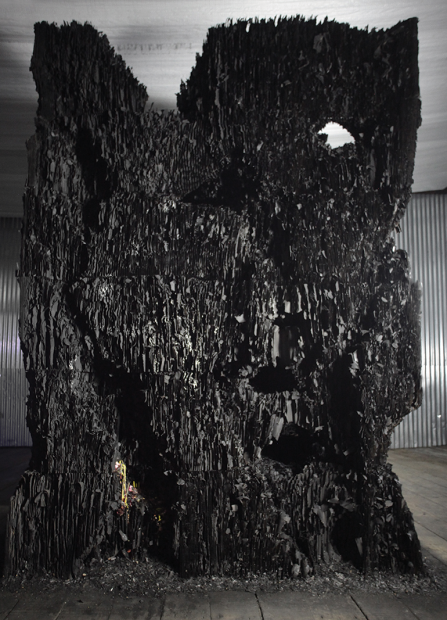We caught up with François Roche, the founder of architecture collective New-Territories, to discuss capitalism, androgyny and robots

The theme of Art Stage Singapore this year is capitalism. How does your work fit in with this theme?
We are exploring a duplicity between two icons in Greek mythology: Pythia and Cassandra. We talk about Pythia and Cassandra as a Janus; a double-face of capitalism torn between telling the truth and inventing a dream for capitalism. Because capitalism doesn’t want to look at the truth. In fact, we have to make a fairy tale for capitalism, a storytelling to prevent it going the wrong way.
Why did you decide to use an androgynous/transgender avatar to represent New-Territories’ work?
The avatar is an identity that was developed in 1993 in France. It was a strategy to hide the architect: to hide who was talking. It was the beginning of a period where architects, such as Jean Nouvel, were trying to be rockstars. Their branding was becoming more important than their work.
Can you explain what exactly you are doing with New-Territories?
We are working with six or seven robots. Everything is designed by robot and we effectively try to corrupt or to pervert the code, in terms of the scripting of the robot, by including some abnormal inputs. The noise of the robot itself changes the trajectory of the work. It has a lot of sensors – sound, humidity, scanning lasers, sensors that react. So you can write a very linear line, but if the robot is making a noise when making the line, it changes the line into something seismographic because it has affected itself – or himself or herself – by the work that it is doing.
So, you’re almost humanising robots…
Yeah, we are working with robot pathology, using permanent feedback. The robot never does what we want. Like Chappie [futuristic robot film]. Like Chappie, something that is emotive. I want to create robots that are emotive and sentimental. It’s like the perfect robot, or the perfect man. The perfect man means the perfect worker, which is exactly the translation of the Polish word for robot.
So the building is never going to be exactly the same as the design – there’s always going to be some variation?
Yeah, exactly. Nothing is designed. We completely stopped designing seven years ago. We try to establish protocols and processes; the design is then discovered through fabrication. In the age of technology, it’s pretty interesting to come back to the period where we could lose control, where we could create a protocol for something that we could not completely define: a proto-design, something that is process. We’ve built ten small constructions with this method.
In Southeast Asia, is there any piece of architecture or city that you’re inspired or impressed by?
Bangkok. I’m very interested in how the buildings are designed there. It is similar to 19th century Paris. It’s a city without any authoritative urban planner, and it is organised in vertical zones – not horizontal zones – with the poor on the ground and the rich in apartments making up the skyline.
Finally, what do you hope to achieve with New-Territories?
To reconstruct the storytelling at the heart of the prevailing economic system of consumerism and to constantly attempt to answer: “what is the purpose of architecture?” I think architecture is something about heroism. I’m a Don Quixote of this kind of heroism. We are in the crack of absurdity: absurdism of the world. The cracks between politics, between social forces, between technologies, where we can renegotiate living together, the conditions of living together and what architecture means. It’s more than the last design.


